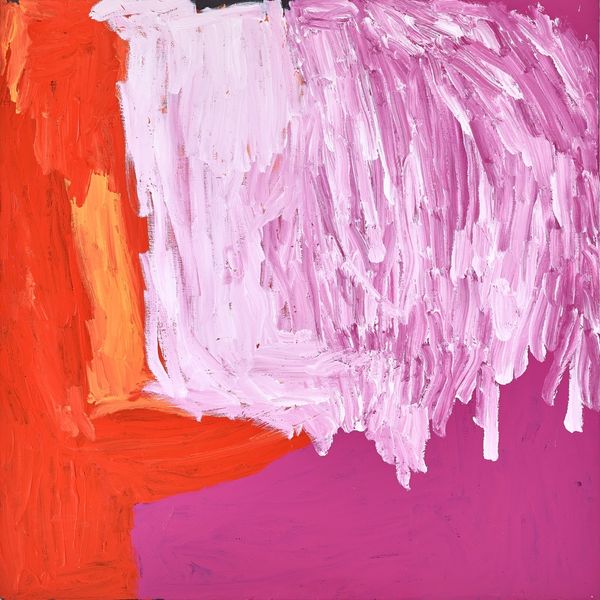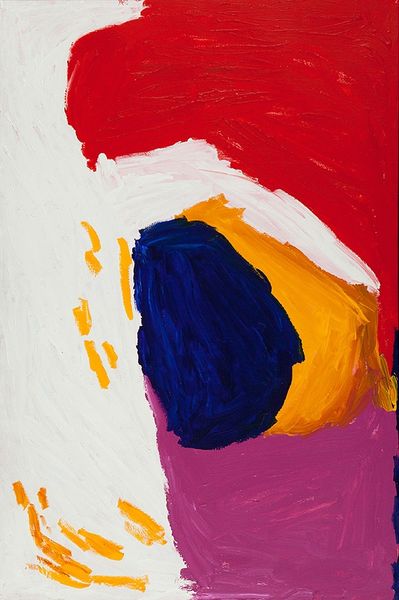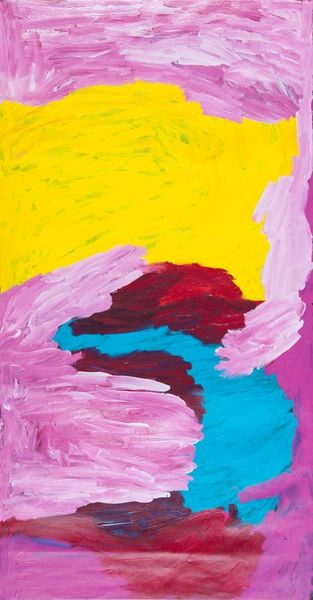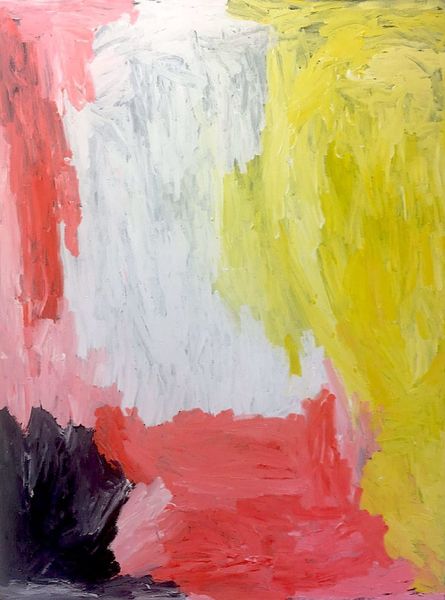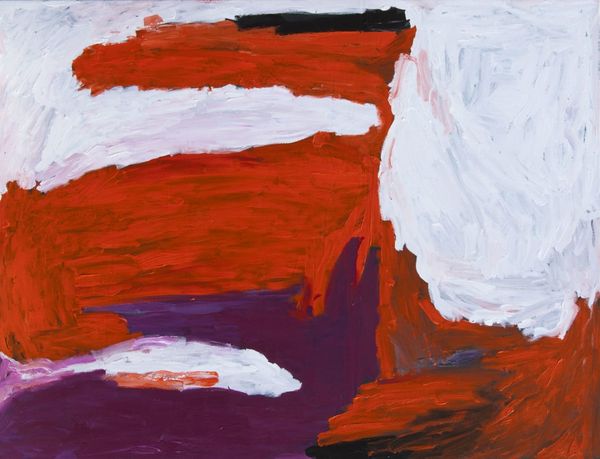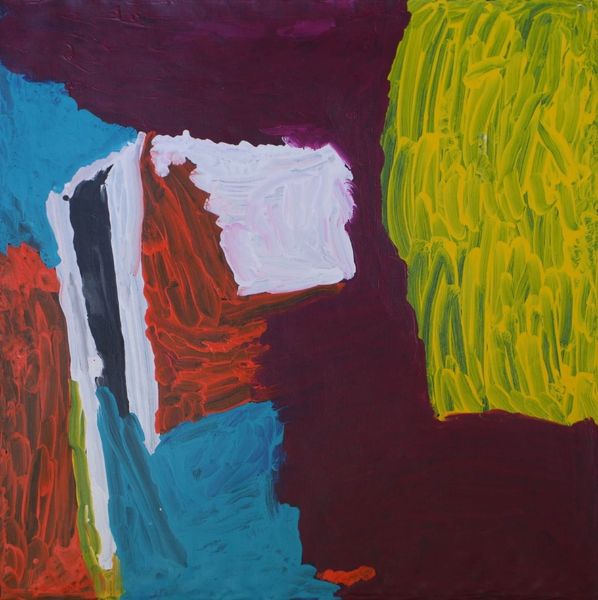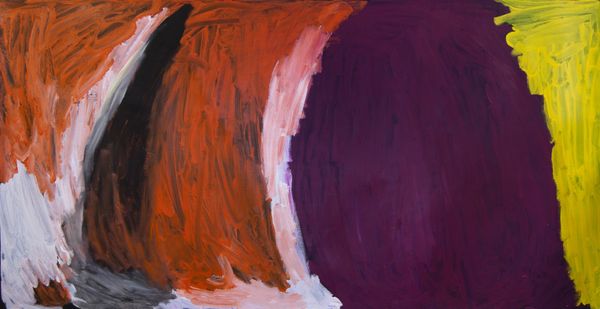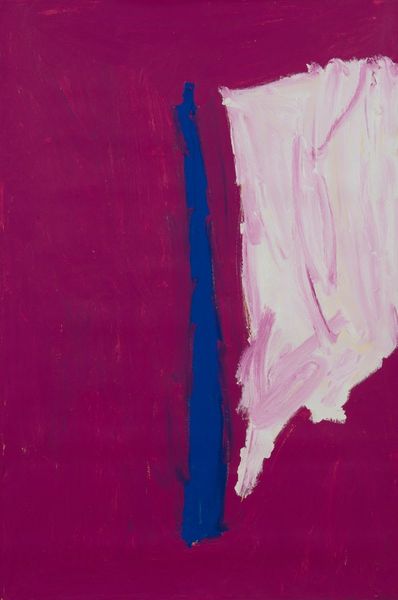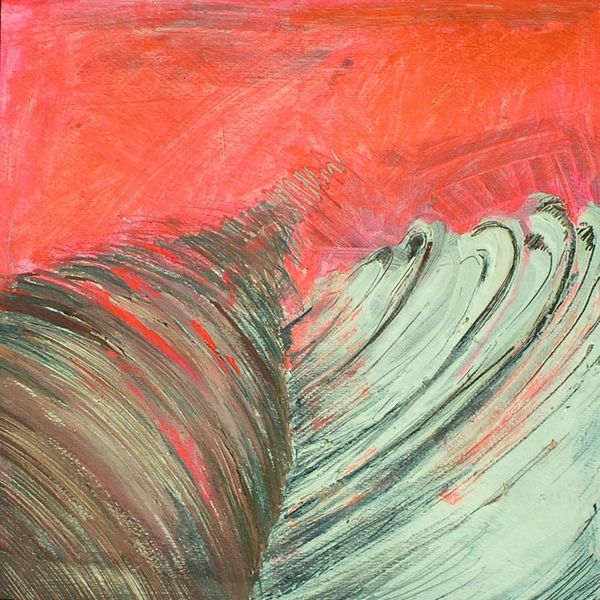
painting, acrylic-paint
#
abstract painting
#
painting
#
landscape
#
acrylic-paint
#
acrylic on canvas
#
art-informel
#
abstract-art
#
matter-painting
#
abstract art
Copyright: Sally Gabori,Fair Use
Curator: Today, we’re looking at "Dibirdibi Country," an acrylic on canvas work by Sally Gabori. Editor: My immediate impression is of a very visceral landscape. There’s something raw and elemental about the broad brushstrokes and the juxtaposition of these very earthy reds and unexpected vibrant pinks and yellows. Curator: Indeed, Gabori's paintings challenge conventional landscape depictions, intertwining them with deeply personal narratives tied to her homeland, Bentinck Island. Her work encourages viewers to engage with themes of displacement, cultural resilience, and the politics of Indigenous representation. Editor: You can feel the physicality of the paint, the directness of application. The making itself becomes a part of the statement. It’s not just what's depicted but how it’s depicted that tells the story, right? These large sweeps of color remind me of raw pigment, clay, materials gathered directly from the land. Curator: Exactly. Gabori, who only began painting in her eighties, brings a lifetime of lived experience to her art. Consider the colonial context: her community faced forced relocation due to a government initiative. “Dibirdibi Country”, therefore, transcends mere aesthetic appeal. It acts as an assertion of Indigenous presence, claiming space through vivid color and bold compositions that disrupt established art historical narratives. Editor: And the lack of detail becomes so powerful. She strips away the representational layer and forces you to confront the pure materiality of the paint, its texture, and the way it interacts with the canvas. There’s an inherent connection to labor and to the land that those materials came from. Curator: Gabori gives us space to re-imagine landscape not just as a pretty vista but as a site of cultural significance and resistance. The colors aren't just colors; they become symbolic representations of place, memory, and identity within a broader political landscape. Editor: This work is less about seeing the land, and more about feeling the land, feeling the connection. For me, it really elevates the process, bringing it to the forefront. Curator: It truly exemplifies how art can function as both a personal and political statement. It leaves you with the urgent need to examine the colonial legacy that has impacted Indigenous communities worldwide. Editor: Yes, it makes one reflect on the labour embedded within these landscapes, a great piece, indeed.
Comments
No comments
Be the first to comment and join the conversation on the ultimate creative platform.
